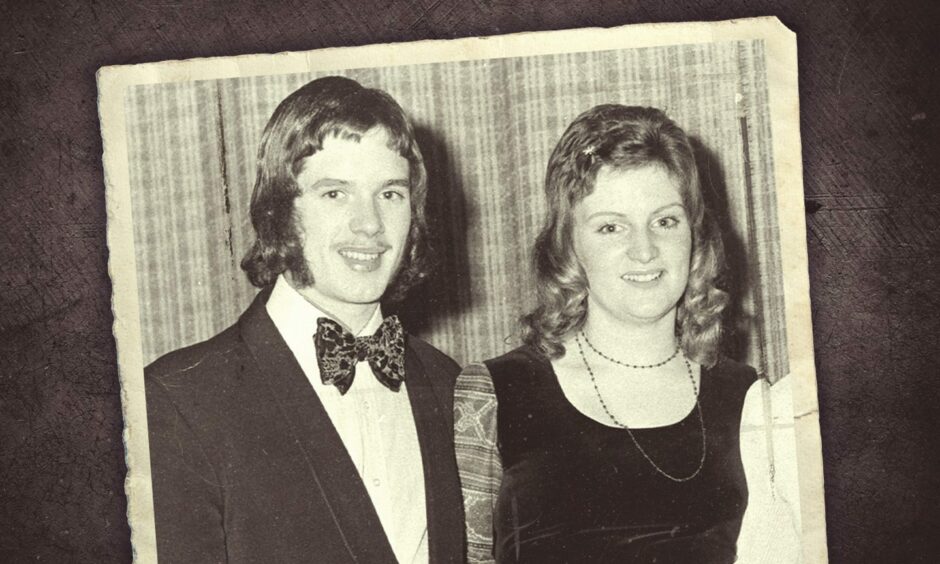
Forty-five years after the accidental discovery of a forgotten Dundee murder victim, a best-selling author is still baffled by a chilling find he made while writing about the case.
It was so intriguing it inspired a novel — yet he is still no nearer to solving the mystery.
Alexander McGregor, former chief reporter of The Courier, made his startling find when he was researching a chapter for his book, The Law Killers, involving the murder of a young mother by her husband.
Helen Wilkie had vanished on the night of the christening of her baby son following a night out at the Golden Fry restaurant with her husband, Jimmy.
They never got as far as eating.
The extraction of one sentence made the hairs on the back of my neck stand up.”
Alexander McGregor
It was February 1974 and the couple, both teenagers, had married several months earlier, after Helen had fallen pregnant.
The doomed marriage stumbled along amid a series of disputes and rows, a number of them in public, and Helen made no secret of her unhappiness.
Various theories were advanced as to what had happened to Helen and the case tragically went cold as the months slipped by.
Wilkie eventually moved out of Dundee, with his in-laws adopting their grandson.
Who sent a Christmas card in 1974?
There were apparent sightings of Helen in London, Dundee and other parts of Scotland.
Helen’s parents also received an elaborate red herring when a Christmas card arrived in 1974 signed “Helen”, which had been posted in Dundee.
Wilkie at the time was living in Canada.
Alexander said there was inevitable gossip and speculation about the fate of the hairdresser who had apparently abandoned the baby son she doted on.
But her disappearance remained a mystery until just over four years later when, on March 15 1978, a digger driver excavating ground for the foundations for a shed at Littleton Farm near Longforgan, stumbled upon her buried remains.
A well-preserved blue tie was found around her neck — a tie Wilkie had admitted he had worn at the christening and later on their night out.
It was when he was researching the trial reports in filed copies of The Courier at Dundee’s Central Library more than quarter of a century later that Alexander made the find that has troubled him ever since.
“I was taken aback to discover that someone had very precisely cut out a photo of Helen and also a single sentence from part of a witness statement on another page,” he explained.
“I can just about understand why someone might want to remove the photo, but the extraction of one sentence made the hairs on the back of my neck stand up.
“I obviously checked to find what the sentence said and all it amounted to was that a single high-heeled shoe was found beside the body.
“It made no sense then and still doesn’t.
“I have no idea when the pieces were cut out. It could have been the day after the file was lodged in the library or any time in the 25-plus years after.
“But whoever did it knew exactly what they were looking for.
“No-one goes into a public library with a razor blade – because that was obviously what was used – then digs out a particular paper, unless they are very determined to take something away.”
There is no simple explanation
Alexander’s subsequent book, The Law Killers, became a best-seller, topping the Scottish charts for three months, and his publishers were keen to have a follow-up.
“I told them of my library experience and said it seemed so intriguing that it might form the basis of a novel.
“They agreed and the result was Lawless, a crime novel about a journalist making a baffling find in newspaper files in a public library!”
Alexander says that any time there is an anniversary of the Wilkie case he tries again to come up with an explanation for his chilling find.
“I can produce new theories, but none really add up. There certainly isn’t a simple explanation – and that’s the only thing I’m sure of.”
Wilkie, in his own defence, recalled his wife’s disappearance.
He said an argument broke out over Helen’s demands for more drink on top of the not-insignificant amount she had already consumed.
He said: “Helen said she wanted a drink and shouted to the waitress.
“I said to cancel the order. She’d had a fair amount to drink already, and I thought we would be drinking later on.
“Helen was annoyed and kept on saying that she wanted a drink.
“I kept on refusing. She got up and said: ‘To hell with you’.
“She got about three quarters up the stairs and stumbled and fell forwards.”
“Helen had blood on her clothes and hands,” he explained, adding that they had then returned home where she changed into a wine-coloured dress.
Later they drove into town in the hope that Jimmy might see his sister.
What happened on the way to Longforgan?
When this was unsuccessful, they headed in the direction of Longforgan to collect their son from Wilkie’s parents before stopping to visit the public toilets in Riverside Drive.
“Helen kept asking me to go for a drink. After I said we were just going home she kept saying she wanted a drink and I kept saying she had had enough.
“We stopped at the toilets at the top of Riverside Drive.
“When I came back Helen wasn’t in the car.”
After waiting a while he said he checked the ladies’ toilet but there was no sign of her.
He said he drove back home via the town in case he bumped into her.
When he got home she wasn’t there so he changed the baby, fed him then went to bed.
In the morning he dropped his son off at his in-laws, then went to work.
That evening he returned and Helen’s father decided they should report her missing.
In June 1978 Wilkie sat in the dock at the High Court in Dundee and listened intently as a number of witnesses described his short but turbulent marriage to Helen.
The jury of nine men and six women took just one hour and 10 minutes to find the 22-year-old test fitter guilty by majority of strangling his wife back in February 1974.
Sentencing Wilkie to life imprisonment, Lord Robertson said: “You have been found guilty by a jury of what can only be described as a horrible crime, and there is only one sentence I can impose.”
As sentence was passed he merely bowed his head.
His mother broke down in tears and had to be comforted by friends.
Wilkie’s girlfriend, Donna McKenzie, also known as Wilkie, with whom he had formed a new relationship at Seaview Caravan Site, Aberdeen, was visibly upset.
Wilkie could have been released in 1979
Wilkie was serving the first year of a life sentence when permission was given in January 1979 for fresh evidence to be heard which could have resulted in his release.
Wilkie sat in the High Court in Edinburgh and heard a young Dundee housewife say she had seen and spoken to his wife three months after he was said to have murdered her.
Former neighbour Valerie McCabe, 27, said she had been at home at Hill Street on May 18 1974 when Helen came to the door and said she was wanted on the Wilkie’s phone.
After speaking to her husband, who had been attending a football match in Glasgow, Mrs McCabe said she put her head “round Mrs Wilkie’s living-room door” to thank her.
Questioned about her eyesight during the appeal hearing, Mrs McCabe said she could see quite well, although she wore glasses.
However, when shown a photograph of a woman friend of Wilkie’s who had stayed at the flat after Mrs Wilkie had disappeared, Mrs McCabe said the woman in the photograph could be Mrs Wilkie.
Lord Emslie eventually refused the appeal.
He said the evidence suggested Mrs McCabe “was not an observant woman”.
“The most important thing is that she was undoubtedly strangled by her husband’s tie,” he said.
“According to Wilkie’s own evidence, he had worn it at the christening and took it off at the reception, placing it in his wife’s handbag.”
Lord Emslie said that it was difficult, if not impossible, to believe that Helen, having deliberately abandoned and cut herself off completely from her husband, would have continued to carry the tie in her handbag for months.
Wilkie was eventually freed in 1986 and settled into life as a JCB driver before he was killed in a road accident near Drumoig in 1996.
Alexander remains eager to solve the mystery of the missing text and picture.
“It still baffles me,” he admitted.
“What connection did the person have with the case? And what was the significance of the words taken away?
“I think about it all the time but, to this day, I’m none the wiser.”
The Wilkie case forms an extensive chapter – Family Ties – in a recently published updated edition of The Law Killers.
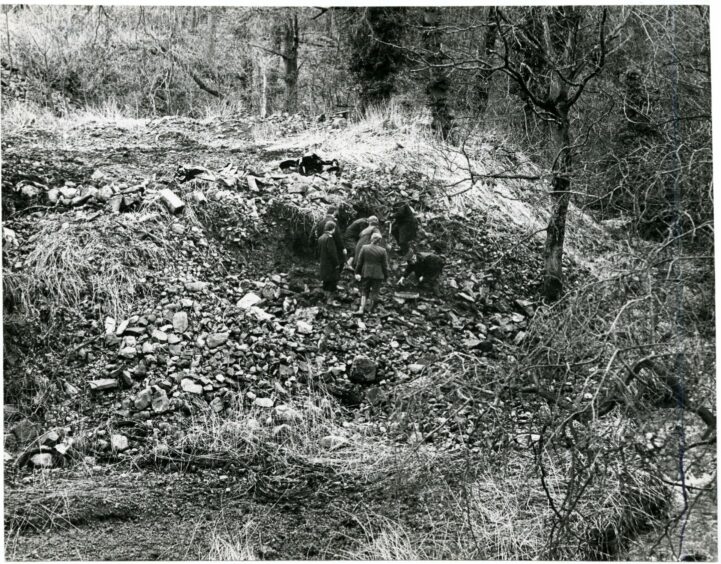
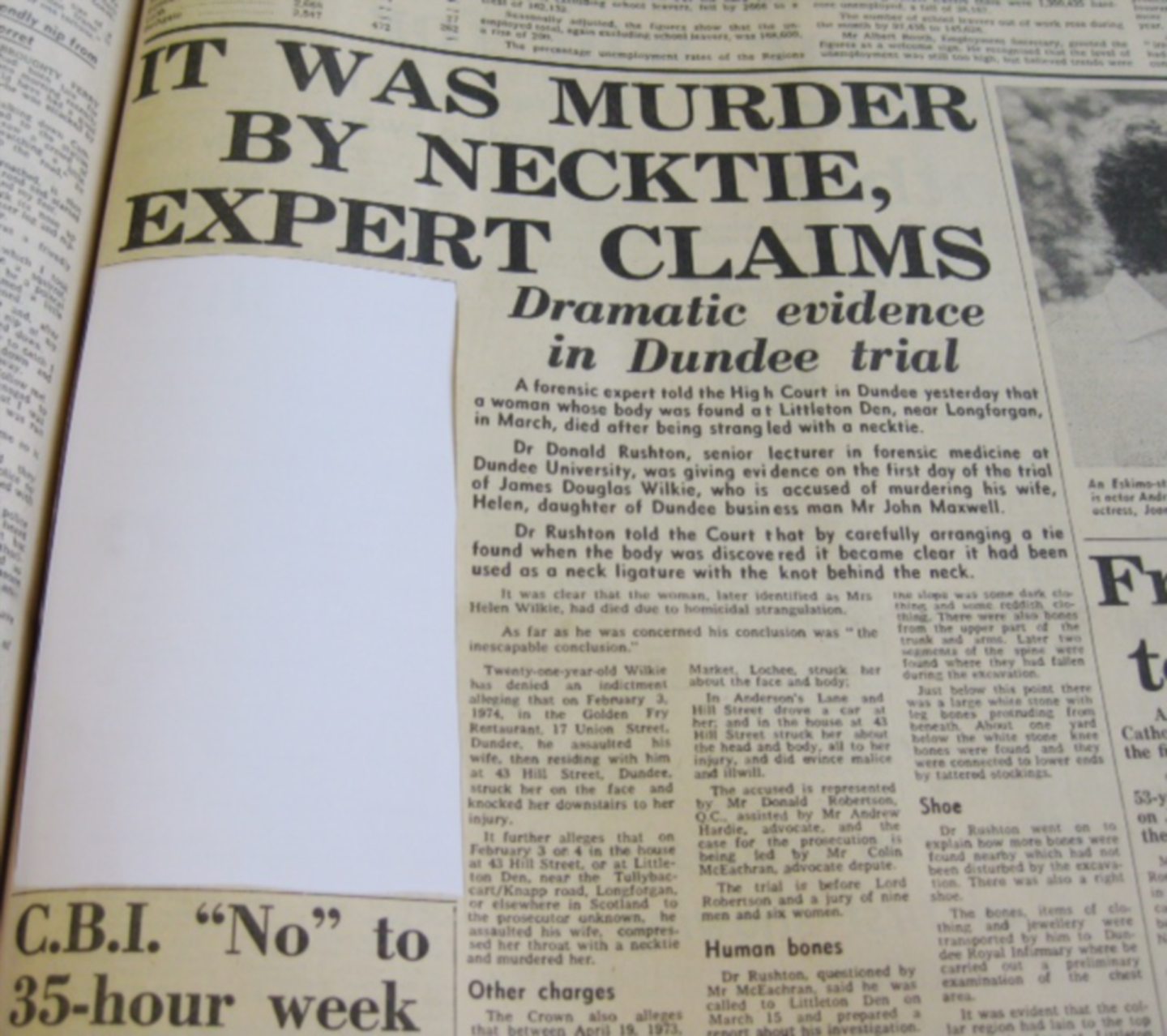
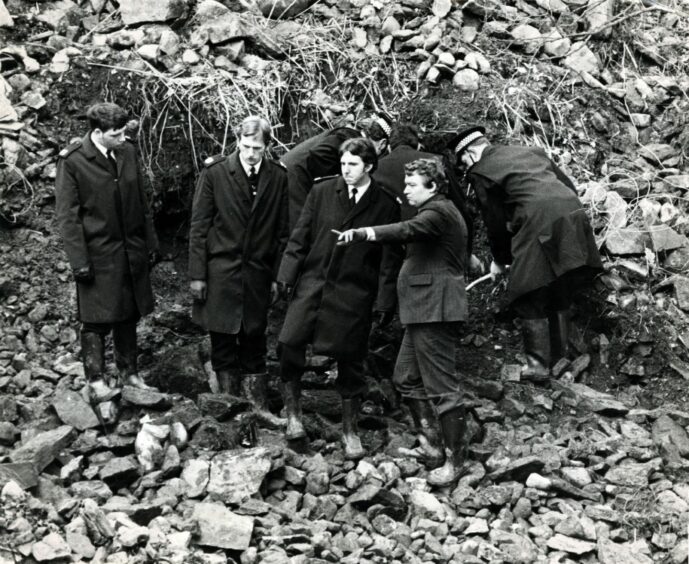
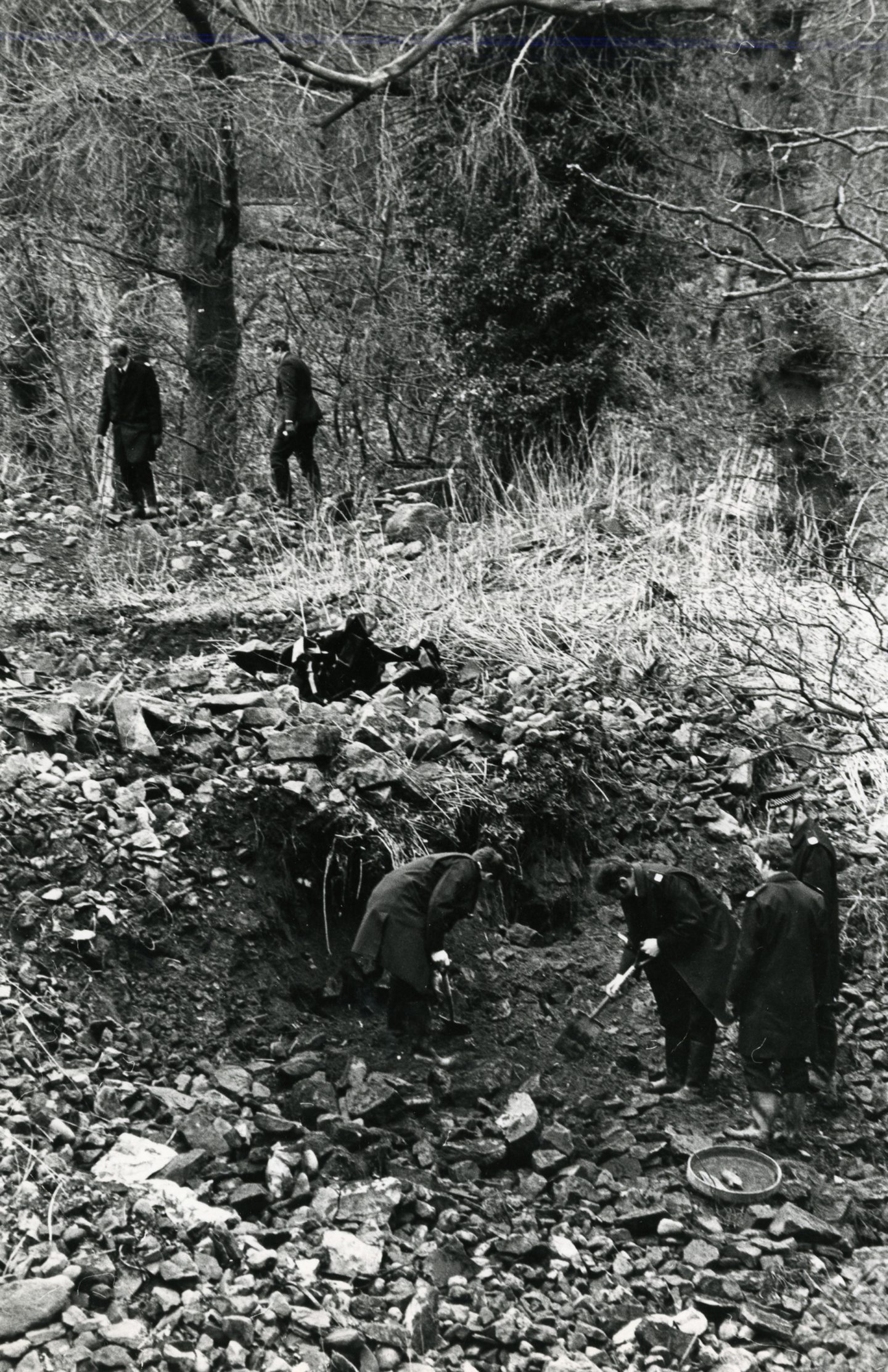
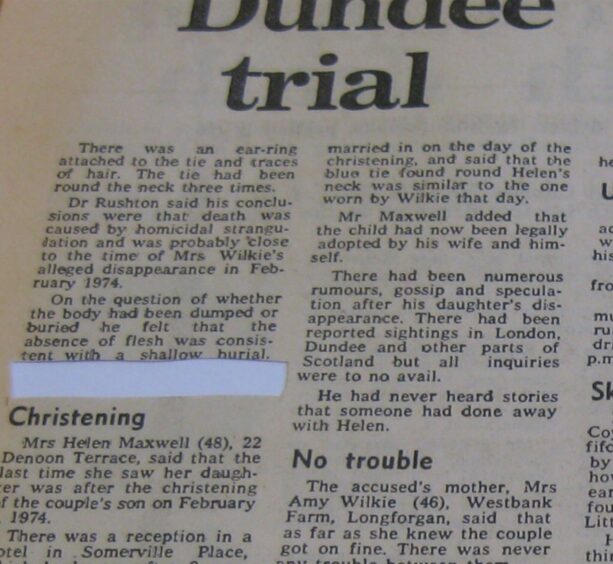
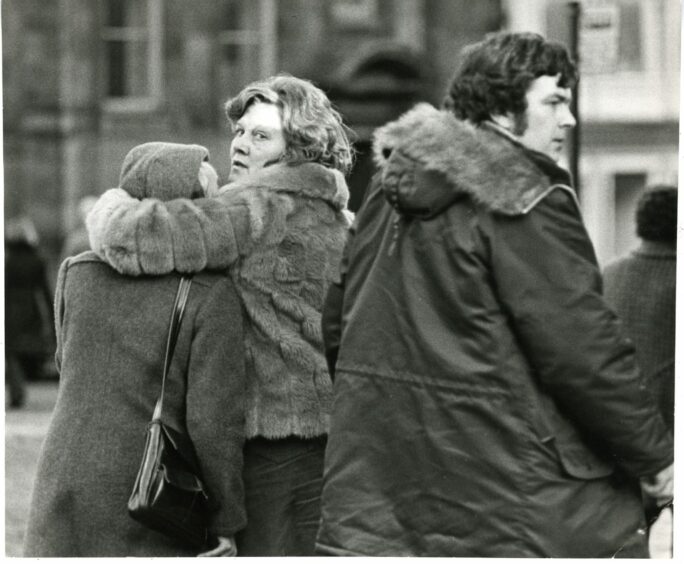
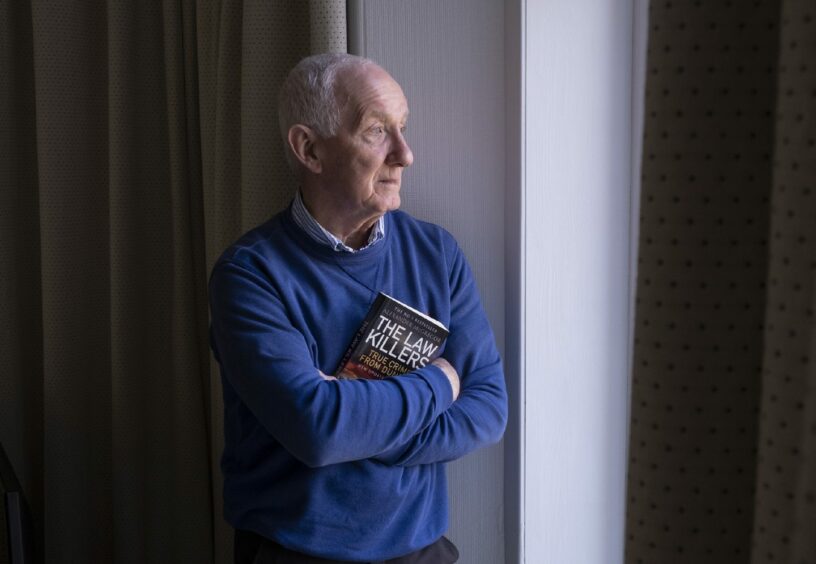










Conversation